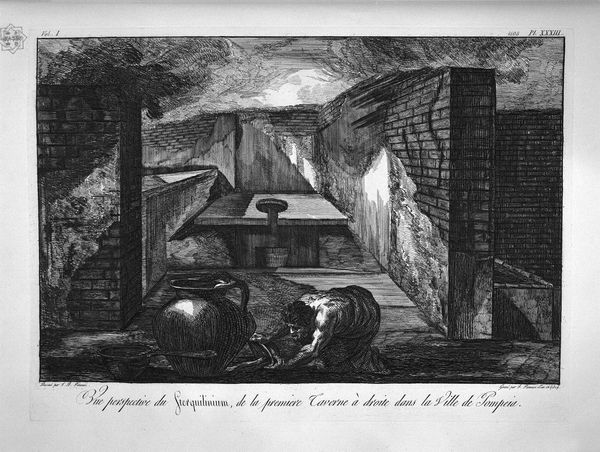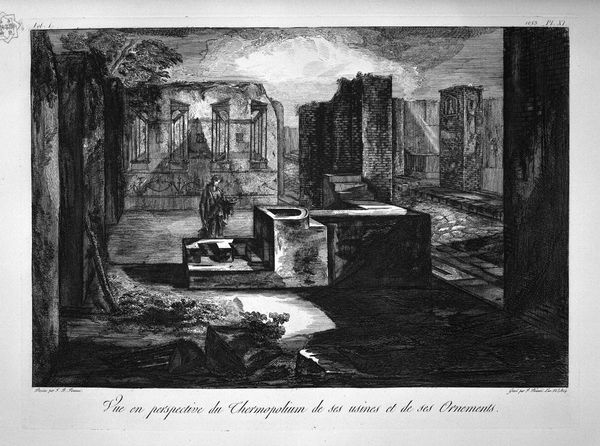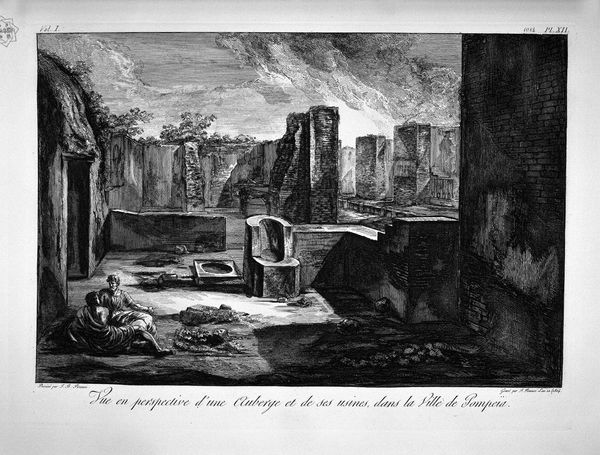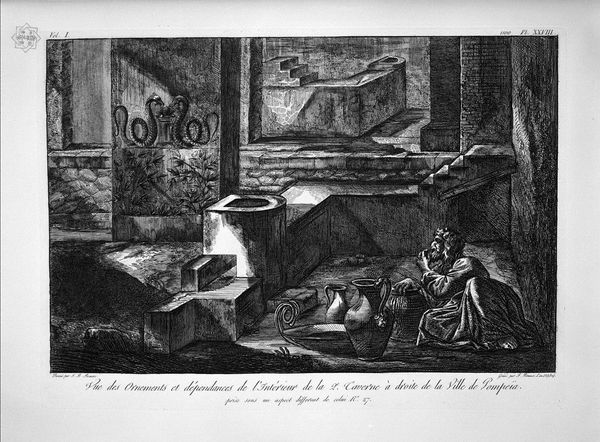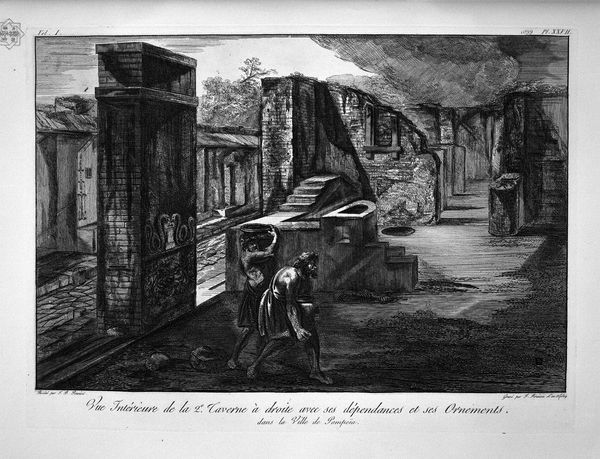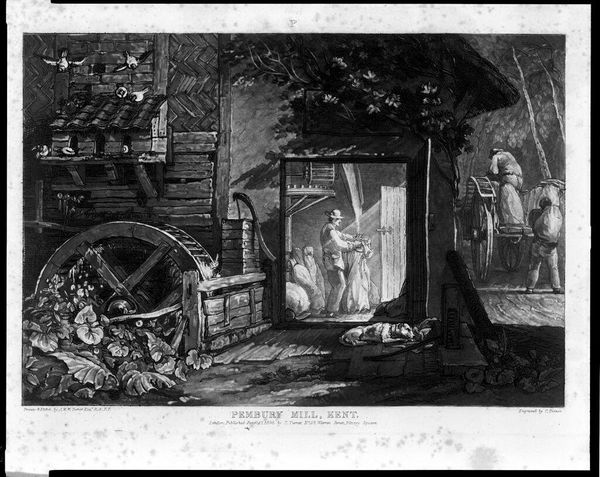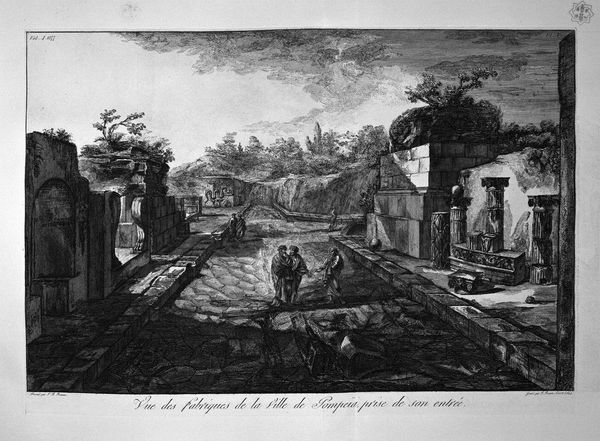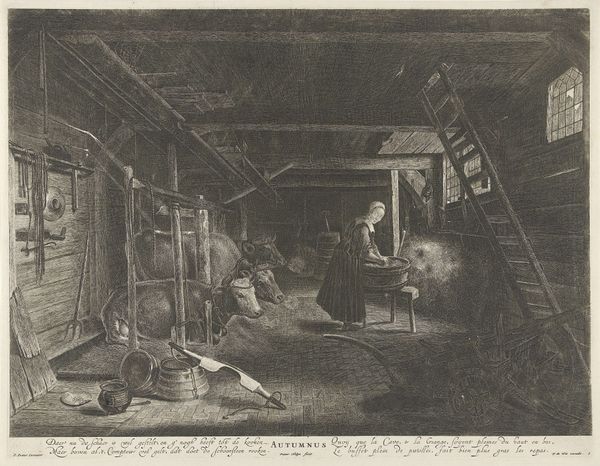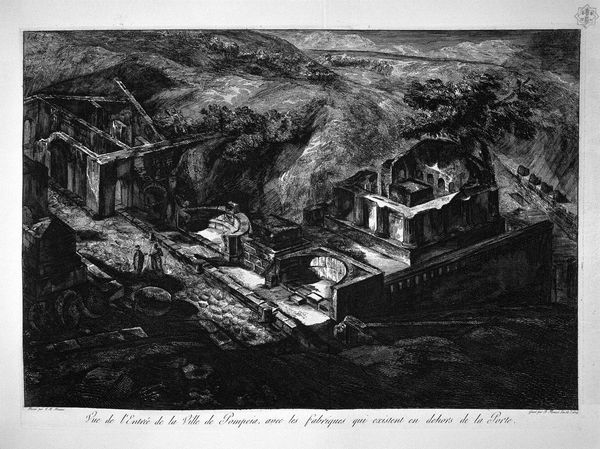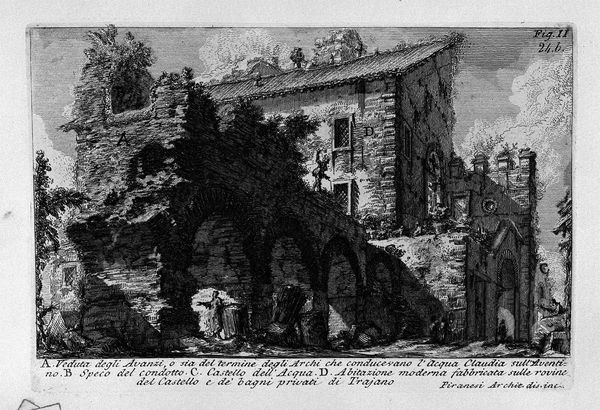
print, engraving
#
ink drawing
# print
#
perspective
#
form
#
ink drawing experimentation
#
ancient-mediterranean
#
column
#
line
#
cityscape
#
history-painting
#
engraving
Copyright: Public domain
Curator: Giovanni Battista Piranesi's print, "Inside the Tavern," invites us into a haunting space with incredible depth. Editor: Yes, there’s something deeply unsettling about the sharp contrasts of light and shadow—an ominous quality, don’t you think? It makes me consider the narratives it obscures. Curator: Precisely. Piranesi, an innovator using the engraving technique, deploys lines to create an intricate system of forms. The composition centers around an interior defined by stark orthogonal lines. Note how Piranesi positions us as viewers, peering into a space that's both intimate and expansive. Editor: And what of this tavern space? It speaks to the common citizen of Pompeii. Here, we see figures, maybe negotiating something seedy in this half-ruined building. It all feels pregnant with unequal social relations. I am curious to understand how and why the Ancient is reclaimed here, and how we, as viewers, negotiate a fraught connection with antiquity. Curator: It's worth emphasizing the technical brilliance here. Piranesi uses linear perspective not merely to depict space, but to construct a rigorous visual experience—lines converge, diverge, suggesting depth and recession, all contained within the two-dimensional plane. He manipulates the concept of architectural grandeur within a more prosaic structure, doesn't he? Editor: Yes, and those deliberate formal choices also serve a purpose, to comment on the social context of its era. I would add that situating this artwork within a historical narrative allows for further understanding of 18th-century attitudes toward class and politics, given the backdrop of revolutionary foment in Europe. The romantic ruin becomes, then, not just aesthetic, but also a warning, maybe? Curator: I appreciate your take. I will be stuck, though, in this almost tangible construction of form, using these engraver's lines and how it generates that space. Editor: It's these multiple perspectives that allow us to view a historical image like this one with such complex emotionality. Thank you for your formalism.
Comments
No comments
Be the first to comment and join the conversation on the ultimate creative platform.

